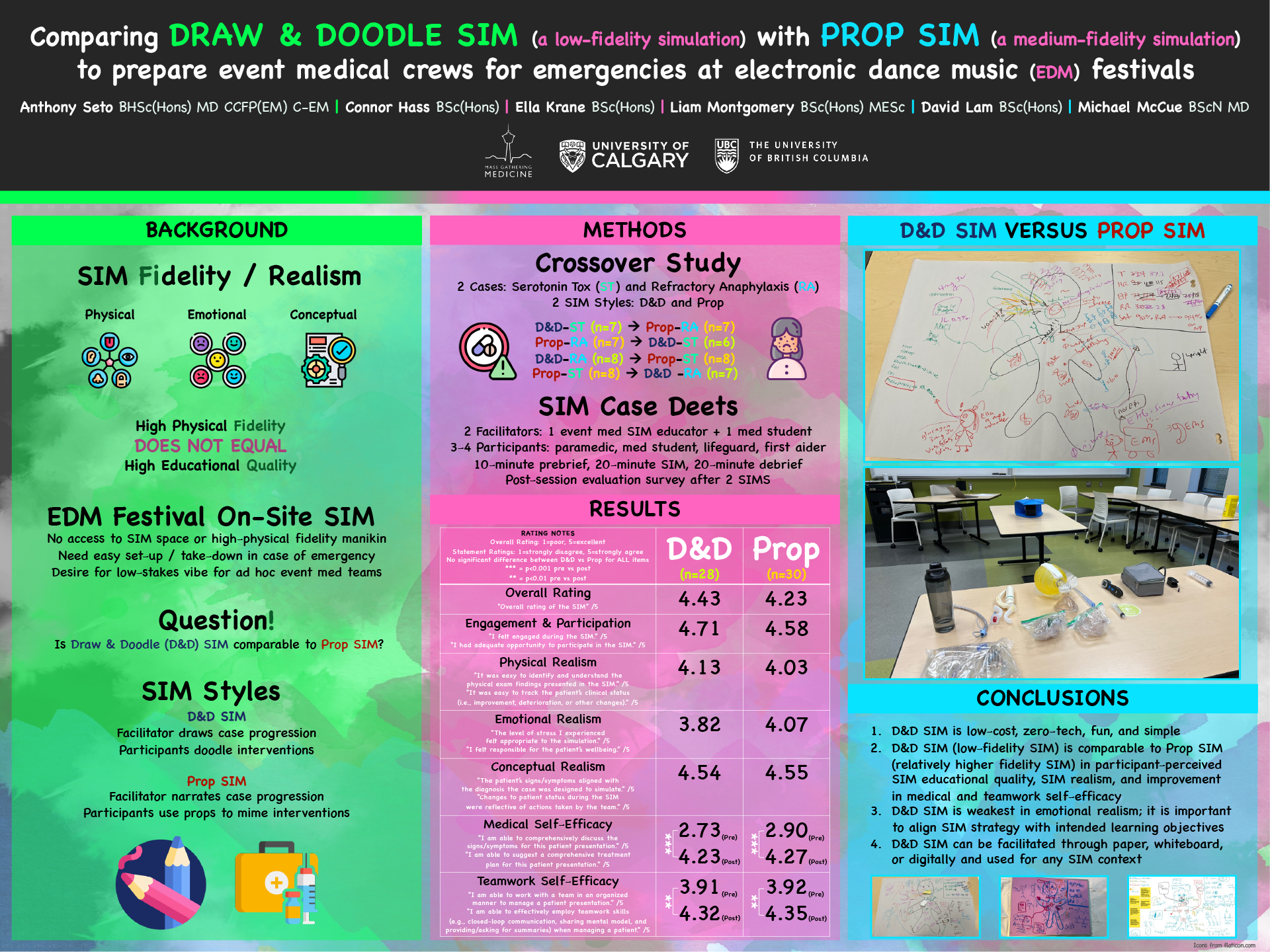|
Draw & Doodle SIM (low-fidelity simulation) versus Prop SIM (medium-fidelity simulation) to prepare for emergencies at electronic dance music festivals
Contributors
Anthony Seto BHSc(Hons) MD CCFP(EM)
Connor Hass BSc(Hons)
Ella Krane BSc(Hons)
Liam Montgomery BSc(Hons) MESc
David Lam BSc
Michael McCue BScN MD
Introduction
Simulation fidelity is “realism”, divided into physical/environmental, emotional/psychological, and conceptual domains. Some favour higher physical-fidelity, because of perceived improved engagement; however, literature reveals no significant difference in education effectiveness for high physical-fidelity versus lower technological options. Modality choice should align with learning objectives.
Objective
“Draw & Doodle SIM” (D&D SIM), a low-fidelity, zero-technological simulation was developed to prepare medical teams for emergencies at electronic dance music festivals. Using chart paper, the facilitator draws a patient. As the case progresses, the facilitator draws patient status updates and findings. Participants doodle interventions. The objective was to determine whether D&D SIM is just as good as “Prop SIM” in overall rating, educational quality, perceived realism, and participant self-efficacy for clinical and teamwork competency.
Methods
D&D SIM was compared with “Prop SIM” (medium-fidelity simulation) involving a CPR manikin and medical props (e.g., oxygen mask and syringes). Participants joined two cases, one in each modality. This crossover study included four track variations, with each track starting on a different modality or case.
Results
No significant difference in overall rating of D&D (4.43/5, n=28) vs Prop (4.23/5, n=30) SIM was detected. “Felt engaged” (4.71/5 vs 4.50/5) and “adequate opportunity to participate” (4.71/5 vs 4.67/5) also revealed no significant difference. Fidelity domains showed no significant difference for perceived physical (D&D 4.13/5 vs Prop 4.03/5), emotional (3.82/5 vs 4.07/5), or conceptual realism (4.54/5 vs 4.55/5). Self-efficacy for clinical and teamwork competency showed no significant difference for perceived clinical competency post-simulation (D&D 4.23/5 vs Prop 4.27/5) or for teamwork competency post-simulation (4.32/5 vs 4.35/5).
Conclusions
D&D SIM is a well-received, low-cost simulation option that is perceived to provide adequate realism and improves participants’ self-efficacy in clinical and teamwork competencies, as compared to a medium-physical-fidelity simulation. D&D SIM is a zero-technological strategy that provides fun and engaging simulation training by drawing out case progression and interventions. This simple modality can be applied to any simulation training context.
|



